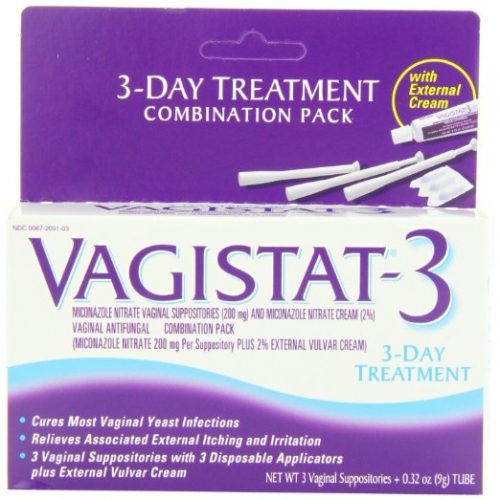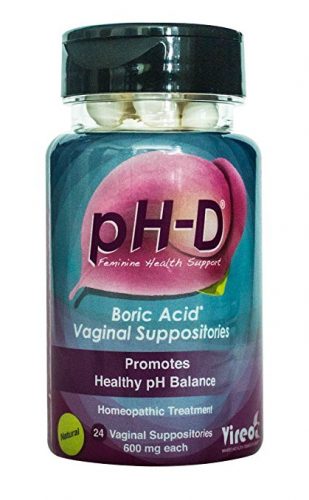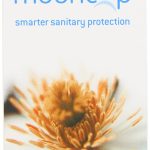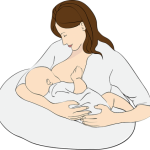Everything You Should Know About Yeast Infections
We realize this is not a fun topic. Maybe you arrived on this article after an internet search for answers to a problem you or someone you know is having.
Those with symptoms of an infection should always consult a doctor before treating or diagnosing themselves to make sure it is a yeast infection, and not something more serious.
That said, vaginal yeast infections are very common and nothing to be ashamed of. Three out of four women will experience at least one in their lifetime, and for a few unfortunate souls, the problem is recurring.
What is a Yeast Infection?
A yeast infection, more formally known as Candidiasis, is a vaginal infection that causes itching and burning of the vulva and sensitive tissues around the vagina, and possibly white discharge.
What Causes Yeast Infections?
The vast majority of yeast infections are caused by an overgrowth of an organism or fungus called Candida albicans, also known as the ‘yeast’ in ‘Yeast Infection’. It is normal to have this organism living inside the vagina in small amounts; it is the overgrowth that causes the problem.
How to Tell if You Have a Yeast Infection
The symptoms of a yeast infection are similar to other vaginal infections, and include:
- Intense itchiness in the tissues around the vagina.
- A burning sensation, and possibly redness or swelling of the labia and vulva.
- Pain when peeing or while having sex.
- Soreness of the vagina, labia and vulva.
- The tell tale sign is the discharge from the vagina. It is usually white and has been compared to cottage cheese. Sorry for the TMI, but it is what it is.
This discharge should NOT have a foul odor. Foul odor is bad news, and woman suffering from this symptom should see a doctor immediately if this is the case.
How Do You Get a Yeast Infection?
Yeast infections have many potential causes. Yeast thrives in warm moist environments.
This infection is not limited to women’s vaginas. Babies can get a very common version of a yeast infection in their mouth called Thrush. Nursing moms can get a yeast infection on their nipples from an infected baby.
Yeast infections are equal opportunity pests.
The Three Central Causes of Vaginal Yeast Infections
The vagina should ideally have an acidic pH of 3.8 to 4.5 and the biggest culprit behind vaginal yeast infections is a change in the balance of the PH level of the vagina.
Anything that changes the pH level is adding to the potential risk.
Lactobacilli bacteria in the vagina are what cause the ideal acidic environment, so anything that kills the bacteria can alter the pH, leading to a yeast infection.
Yeast prefers to grow in areas that are dark, warm and moist. They also take advantage of people with compromised immune systems. Under these conditions, yeast grows rapidly.
Specifically, Some common culprits contributing to yeast infections:
- Panties made from spandex, nylon or other material which can not breathe or does not allow air to circulate is suspect. Moisture can accumulate creating a favorable environment for yeast to grow.
Try this instead: Cotton panties are best, and at the very least, make sure the panty has a cotton liner.
- Perfumes, fragrances and other beauty products not designed for the vaginal area. Perfumed soaps and washes, including douches. These things can change the PH balance and flora balance of the vagina, creating an atmosphere perfect for yeast growth, not to mention other vaginal infections.
Try this instead: All women should clean it with hot water or a feminine cleanser with a pH level designed to clean this delicate area. Never douche; it is linked to problems such as Bacterial vaginosis (BV) and yeast infections.
- Antibiotic use can cause yeast infections because it can kill beneficial bacteria (think Lactobacilli) and allow the yeast to grow unchecked.
Try this instead: Talk with a doctor about antibiotic use. For recurrent yeast infections let the doctor know. Make sure the antibiotic is absolutely necessary. If it is, be prepared for the infection and be mindful about avoiding other potential culprits that can tip the scales and make the situation worse.
- Clothes that are really tight can cause problems because air can not circulate so sweat and moisture is trapped, creating an environment beneficial to yeast growth. The problem is compounded by synthetic material and hot weather.
Try this instead: Try to use all cotton, which breathes better. If possible, use looser fitting clothes.
- Birth control and other hormone treatments can cause yeast infections. One study demonstrated that birth control pills double the risk of getting a yeast infection.
Try this instead: Try a barrier method birth control such as condoms, female condoms, Diaphragm or cervical cap. Try a lower hormone pill or progesterone pill to cut down the risk.
- Oral sex. The same study found that oral sex triples the risk of getting a yeast infection.
Try this instead: Use a ph balanced wash, or take a shower and clean with hot water after engaging in oral sex if oral sex is suspected of causing the problem.
Try this instead: use a different method of birth control such as a non-spermicidal condom, diaphragm or cervical cap.
- Scientists have discovered a link between sugar consumption, blood sugar or glucose control problems (think: Diabetes) and yeast infections. Glucose feeds yeast, causing a population explosion. High glucose also compromises the immune system, another factor in helping yeast grow.
Try this instead: Cut sugar out of the diet. Use stevia as a sweetener. Eat fruit when there is a craving for sweets. See a doctor for a checkup to make sure glucose is under control and get advice on how to keep it at a healthy level.

How to Treat Yeast Infection
Prevention
Prevention is the best way to ‘treat’ a yeast infection. Many women who have yeast infections experience recurrent yeast infections and in this case, they must find the underlying cause and fix that, in addition to treating the current yeast infection.
Many of the causes or culprits are listed above. If the person infected thinks one of them may be behind the yeast infection they should address the issue with their doctor and make a plan to eradicate the culprit.
How to Treat an Active Yeast Infection
There are several ways to treat a yeast infection. There is the DIY approach or the sufferer can see a doctor and get a prescription. The DIY approach should only be done if the woman is confident she has a yeast infection. Remember, symptoms of yeast infections can be similar to more serious infections and STI’s (Sexually Transmitted Infections).
Signs a Woman SHOULD See a Doctor Right Away:
- Lower abdominal pain
- Fever of 101 or higher
- Discharge has a bad odor or is a color other than white or clear.
- If the Woman is Pregnant.
- Painful urination or painful sex
- The infection is recurring, or is not resolved with treatment
Doctor Prescribed Oral Antifungal Medicines
These medicines are effective, available with a prescription and are easy to use. Plus since one needs to see a doctor to get a prescription, the doctor will verify that the infection is a yeast infection and not something else. The patient will have peace of mind.
What a Doctor Will Do:
If the woman chooses to see a doctor, the doctor will take her medical history. Then the doctor will perform a vaginal examination with a female nurse present. The doctor will take a swab of the vaginal fluids, called a vaginal smear, or wet mount test.
The doctor or lab technician will look at the fluid under microscope to see exactly what organisms are present and make an accurate diagnosis.
The exam may be uncomfortable or awkward, but it does not hurt. Ruling out other infections, or having a serious infection treated properly and promptly far outweigh any discomfort.
Remember, medical records are private and will not be shared with anyone but the patient and her doctor, unless she allows others to have access.
Self Treatment OTC Creams and Suppositories
If the woman who suspects a yeast infection does not have any of the symptoms listed above that warrant seeing a doctor and she is fairly sure the infection is caused by yeast she can use an over the counter treatment.
There are nonprescription antifungal creams and suppositories that can be purchased at the drugstore, usually located near the pharmacy or stocked on shelves in the same area the pads and tampons are stocked. Simply purchase a box and follow the directions on the package.
What Can a Woman Expect When Using an OTC Cream or Suppository?
Treatment with the OTC cream or suppositories can be 1 to 3 and 7 day treatments using the cream or suppository vaginally. The woman inserts the cream or suppository with an applicator, similar to inserting a tampon.
These are Some Popular OTC Treatments for Yeast Infections:
Vagistat 3 Day Treatment Suppositories

Click Here for Pricing, Pictures and Reviews on Amazon.com
This is a cream suppository. The box includes 3 vaginal suppositories. Three disposable applicators, and one tube of cream to use on the labia to relieve itching immediately.
Simply insert one suppository daily, just like a tampon. The tube of cream is meant to use on the areas that itch. Suppositories are firm, and shaped like tampons, only smaller. They melt inside the vagina and can leak out. The woman will need to wear a pad during treatment.
Monistat 7 Day Vaginal Antifungal Cream

Click Here for Pricing, Pictures and Reviews on Amazon.com
This is a cream used for 7 days. The box includes 7 disposable applicators and a large tube of cream. The woman fills the applicator with cream and inserts into the vagina once each day, disposing of the applicator after each use.
The woman will need to wear a pad to catch any cream that leaks out.
Other Treatments for Yeast Infections
This remedy should be supervised by a doctor. Boric acid is toxic if eaten.
The doctor can write a prescription for a special suppository that the patient puts in their vagina, or the woman can find the suppositories online or possibly in a local pharmacy.
Care must be taken while using this treatment as swallowing the suppositories is toxic. Keep them away from children or animals.
Never use Boric acid while pregnant, it is toxic to the baby.
Boric Acid, which is mildly acidic, treats yeast infections by correcting the pH of the vagina. Remember, the vagina should be slightly acidic, with a ph of 3.8 to 4.5, so the boric acid helps return the vagina to the proper pH. Boric acid also kills fungus and bacteria, helping eradicate the yeast infection.
One OTC Boric acid Suppository is This:
pH-D Feminine Health Support, Boric Acid Vaginal Suppositories

Click Here for Pricing, Pictures and Reviews on Amazon.com
These suppositories do not come with an applicator. The suppositories are made with Pharmaceutical grade Boric Acid in an FDA registered facility.
To use this suppository, the woman inserts one suppository, using her finger, in the evening, preferably bedtime for 6 days. The woman should wear a pad while being treated.
The suppository needs to be inserted as far up as possible, and the woman may experience a burning sensation.
Other Important Information You Should Know About Yeast Infections
- Men can get yeast infections too. Women should avoid sex during the infection and if the man has the infection, he should see a doctor to be treated. If the man is infected, he can pass the infection back to his partner.
- Yeast infections that keep coming back can be a sign of blood sugar problems or even diabetes. If your yeast infection will not go away, cut out sugar, soda and refined carbs, and see a doctor to be tested for blood sugar problems.
- You know the advice some people give, saying you should pee after sex? It applies here too. Peeing after sex will flush bacteria from your urethra, but it also gives you a chance to expel semen from your vagina.
Semen has a pH of 7 to 8, so the sperm will live, but this can throw off the pH balance of the vagina which is much more acidic. Better to remove the semen.
We hope this article will help any ladies suffering from symptoms of a yeast infection. Remember there is noting to be embarrassed about, it is chemistry and Mother Nature that are to blame.














